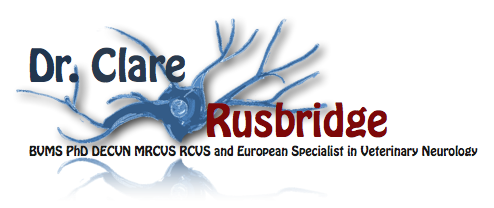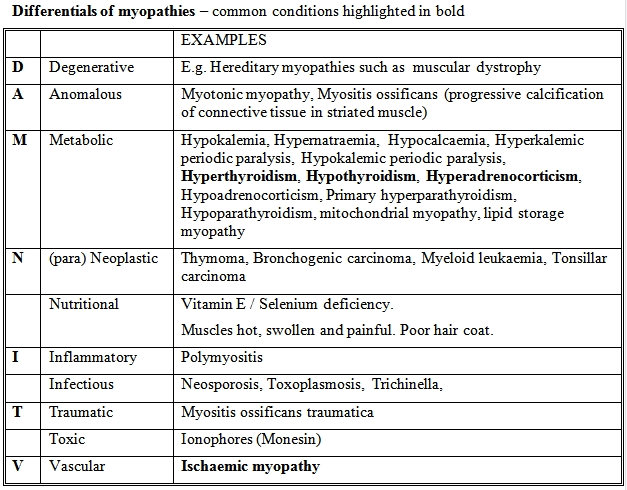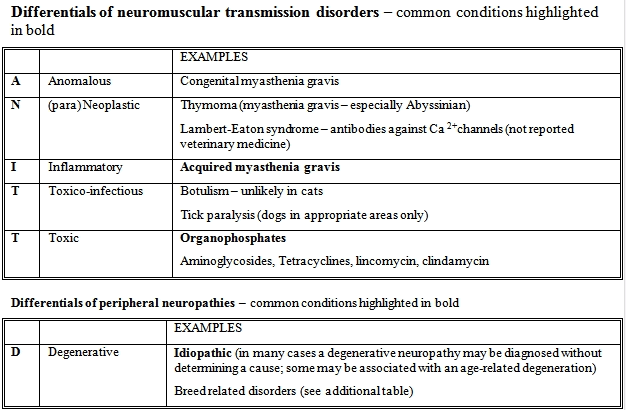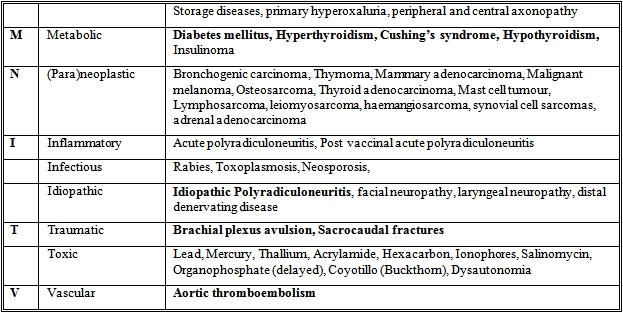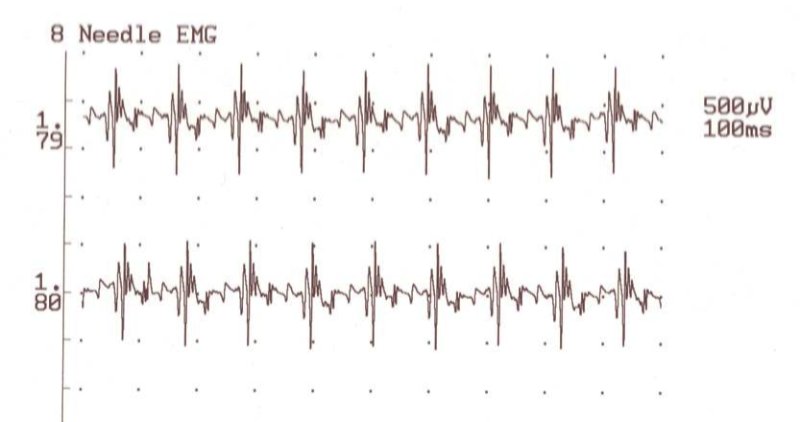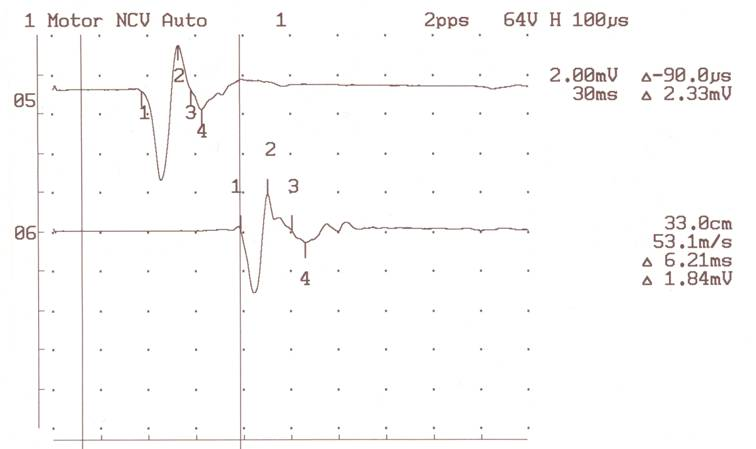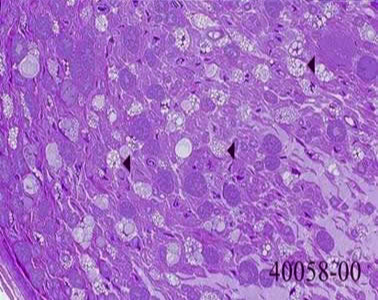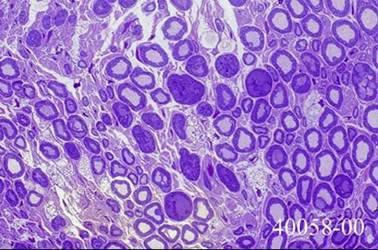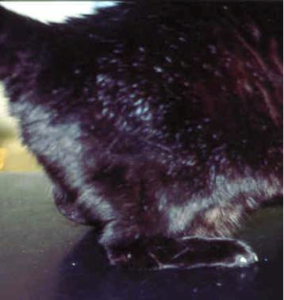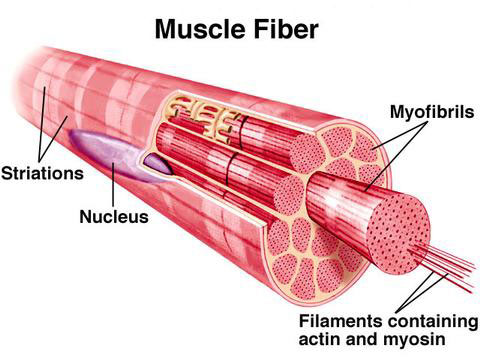
What are the clinical signs of neuromuscular disease?
Weakness is the predominant sign of neuromuscular disease. Mild cases may only have exercise intolerance whereas severe cases may be unable to stand. The gait is often characteristic - initially relatively normal then becoming progressively more stilted and weak. Cats will often “bunny-hop”. Poor “hopping” responses can often demonstrate the weakness. Conscious proprioception and the time taken to correct a knuckled over paw is usually normal. If spinal and/or cranial nerve reflexes are depressed then a neuropathy is more likely. Myasthenic animals often have an absent or fatigable palpebral reflex and poor eye movement.
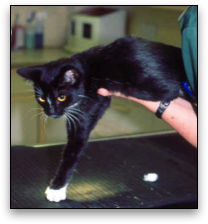
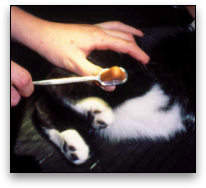
“Hopping” ability (one of the tests in a neurological examination) is often poor when there is neuromuscular disease.
Spinal reflexes may be reduced
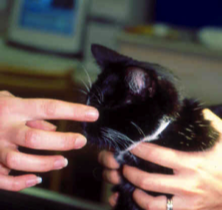
Palpebral responses may be weak or fatigable.
What is the cause of neuromuscular disease?
The list of causes of neuromuscular disease is huge and, as with most of neurology, it is easiest to subcategorise then with the DAMNIT(V) format. There are many neuromuscular diseases that have not been classified.
What is the cause of neuromuscular disease?
The list of causes of neuromuscular disease is huge and, as with most of neurology, it is easiest to subcategorise then with the DAMNIT(V) format. There are many neuromuscular diseases that have not been classified.
This Vizsla has lost muscle, particularly over the head as a consequence of polymyositis. He was presented because of difficulty swallowing. This condition is increasingly recognised in young adult Hungarian Vizsla dogs. (for more information visit http://vizslamyositis.blogspot.com/ and http://vetneuromuscular.ucsd.edu/cases/2007/Sept07.html) see the two links in the right sidebar.
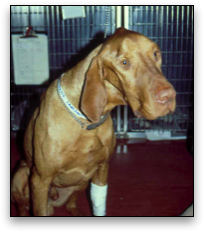
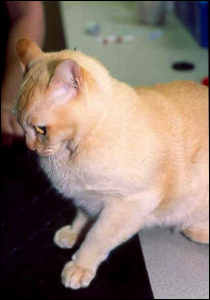
Burmese Cat with periodic hypokalemic paralysis.
He is weak and displaying neck ventriflexion - a posture characteristic for this disease. Periodic hypokalemic paralysis is characterised by low serum (blood) potassium and an extremely high creatine kinase. It is hypothesised to be a sodium channelopathy and is thought to be an autosomal recessive problem in the Burmese. Cases typically present when 4- 6 months old and 50% of affected cats “grow out of” the problem.
Click on pictures right to get a bigger view.
Differentials of myopathies, (first image on the right)
Differentials of neuromuscular transmission disorders (second picture on the right)
Storage diseases, primary hyperoxaluria, peripheral and central axonopathy (third picture on the right)

